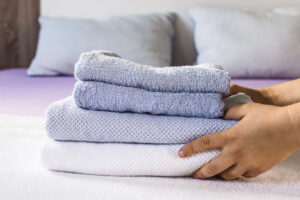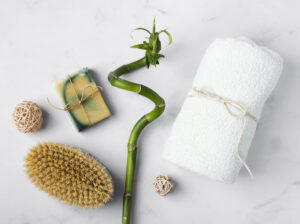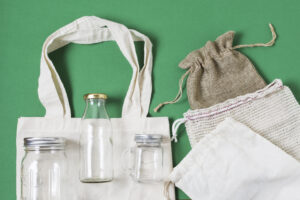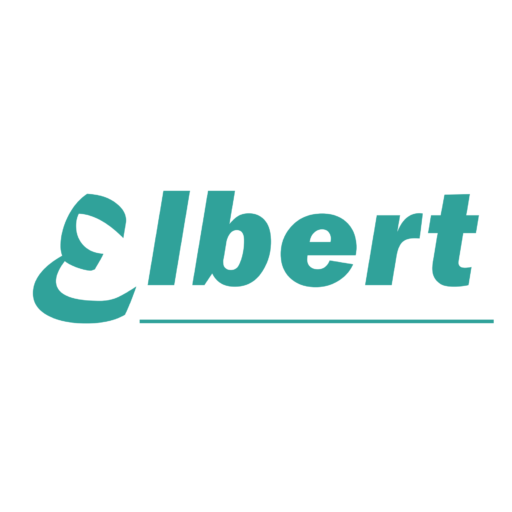Sustainability is no longer a buzzword—it’s a basic requirement in 2025.
Eco-friendly fabrics1 offer cost savings2, brand power, and compliance advantages3 that every B2B buyer should understand before sourcing in 2025.
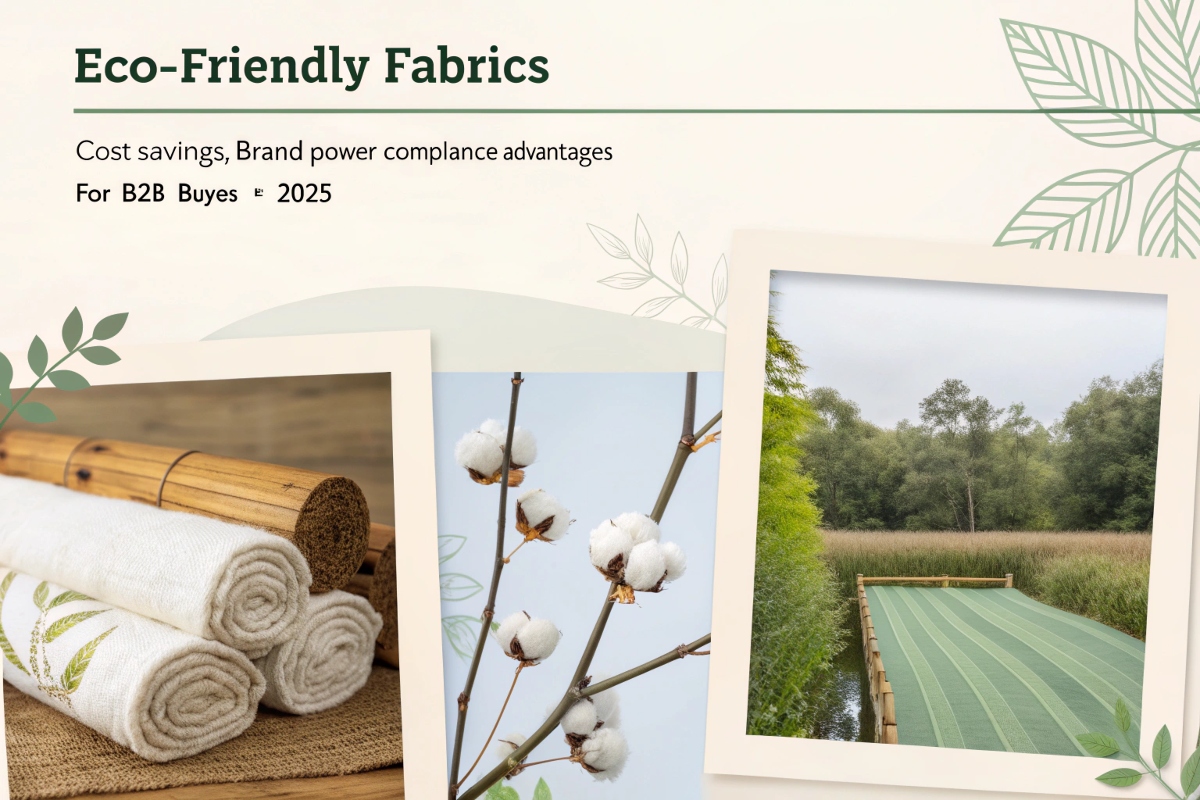
Whether you’re in fashion, automotive, or industrial supply, sourcing sustainable materials4 is no longer optional. Your customers demand it, your partners expect it, and regulators are watching. But the shift doesn’t have to be painful. In fact, it could be the smartest business move you make this year.
What is Eco-Friendly Fabric?
Today’s buyers face pressure from both consumers and governments. Businesses that ignore sustainability5 risk falling behind.
Eco-friendly fabrics6 are materials designed to minimize environmental harm throughout sourcing, production, usage, and disposal.
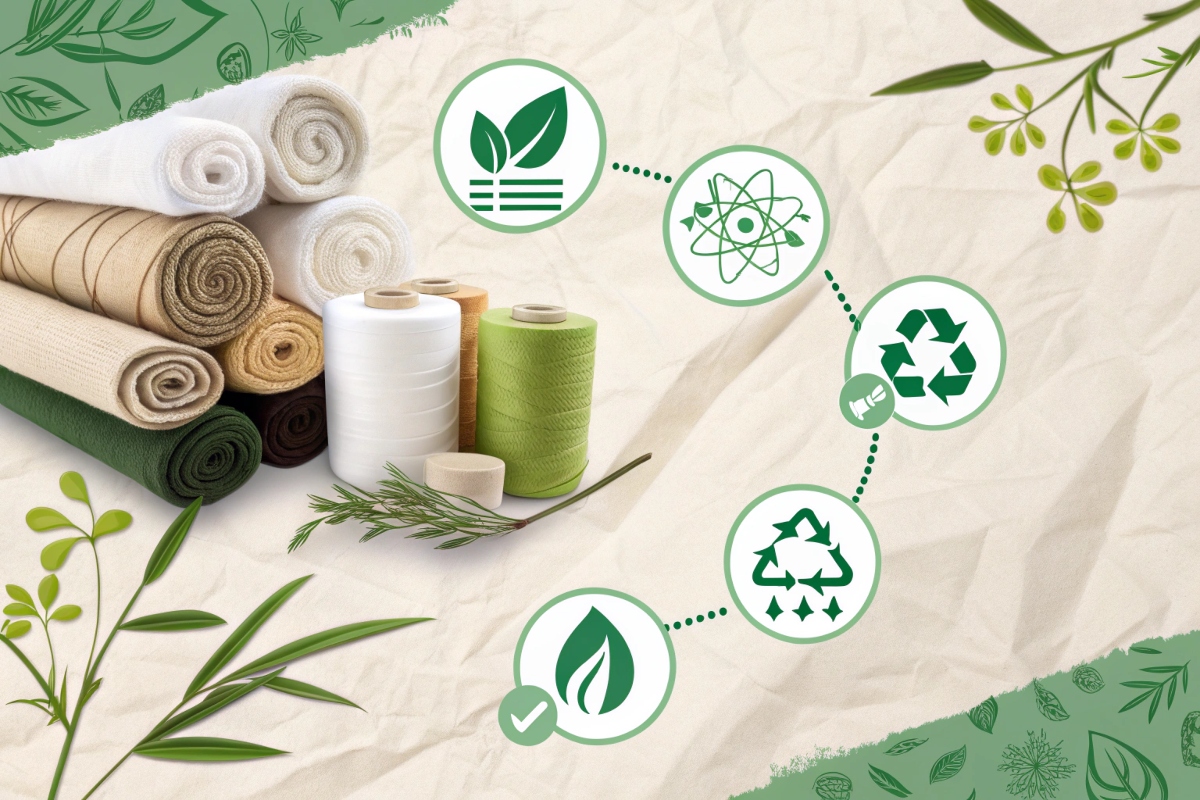
Breaking Down the Definition
Sustainability includes three pillars: environmental, social, and economic. Eco-friendly fabrics reduce resource consumption, use renewable or recycled inputs, and often support ethical labor practices. The key factors include:
- Raw Material Source: Natural fibers (like hemp) or recycled inputs (like rPET).
- Production Process: Low energy, low water, and reduced chemicals.
- End-of-Life Impact: Biodegradability or recyclability.
Here’s a simplified lifecycle view:
| Stage | Traditional Fabric | Eco-Friendly Fabric |
|---|---|---|
| Raw Materials | Petroleum or GM cotton | Bamboo, hemp, recycled polyester |
| Energy & Water Use | High | Low |
| Waste Output | Non-biodegradable | Compostable or recyclable |
| Social Impact | Poor labor conditions | Often certified ethical |
Why Should B2B Buyers Care?
Greenwashing is out. Verified sustainability is in. Businesses sourcing smart7 gain long-term benefits.
Eco-friendly fabrics reduce emissions, support innovation, and enhance supply chain resilience—all while improving margins and branding.
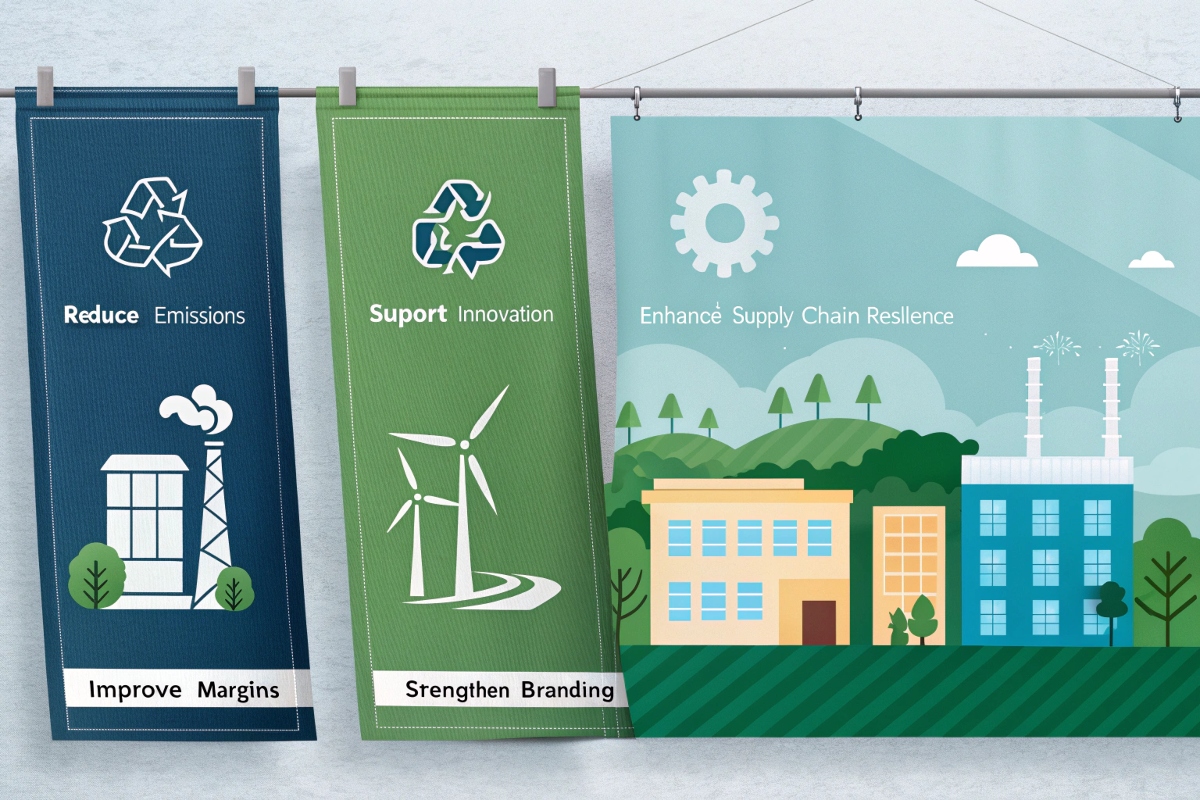
10 Business Benefits You Should Know
Let’s unpack how sustainable materials can support your bottom line:
| Benefit | Explanation |
|---|---|
| Carbon Reduction | Lower energy inputs and renewable sources cut emissions. |
| Cost Savings | Efficiency improvements reduce lifetime costs. |
| Compliance | Avoid penalties and meet evolving green regulations. |
| Brand Loyalty8 | Eco-labels appeal to conscious consumers. |
| Investor Attraction | ESG-focused investors prefer responsible sourcing. |
| Employee Engagement | Teams align with green values. |
| Innovation Potential | New materials open product development paths. |
| Supply Chain Resilience9 | Diversified, localized, and transparent suppliers reduce risk. |
| Market Differentiation | Be first in category with verified green claims. |
| Waste Reduction | Circular sourcing leads to less landfill use. |
Which Materials Are Leading in 2025?
The market is flooded with options, but not all are truly green.
Top sustainable fabrics in 2025 include both plant-based and lab-engineered materials that balance function and impact.
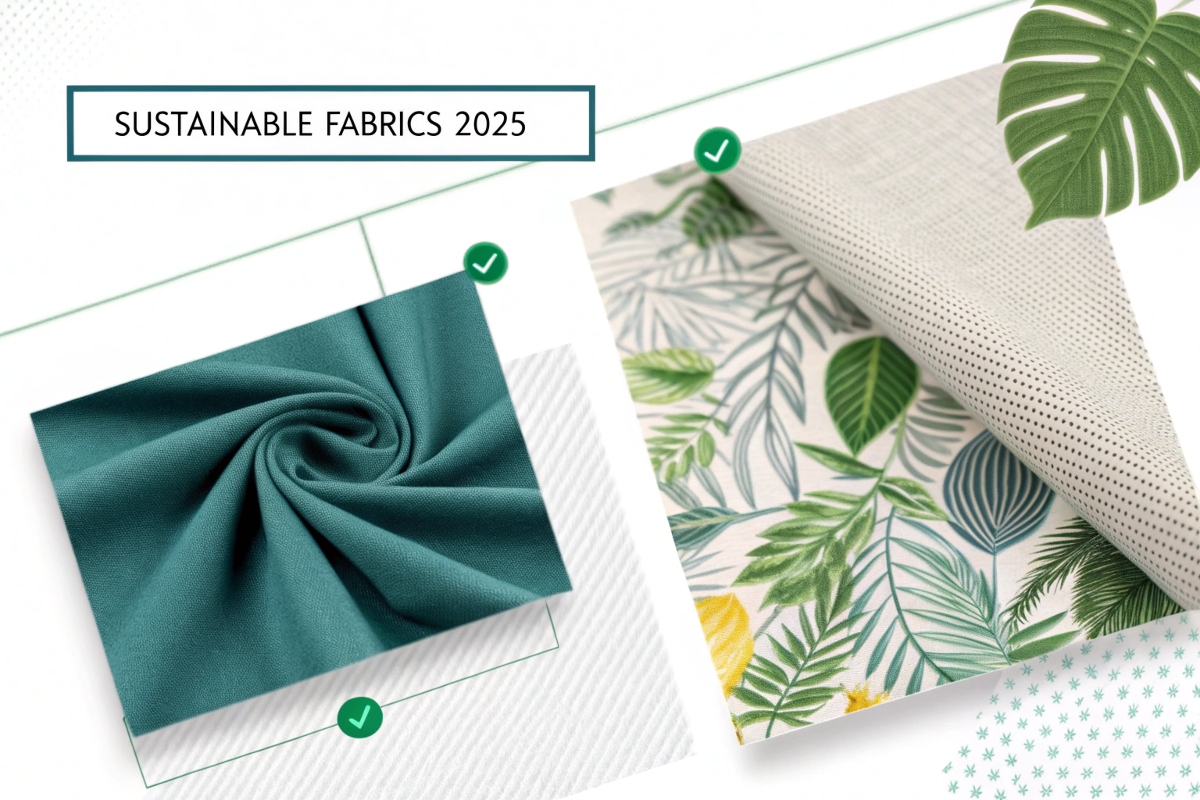
Pros & Cons of Popular Materials
Here’s a high-level breakdown:
| Fabric | Pros | Cons |
|---|---|---|
| Organic Cotton10 | Natural, biodegradable | High water usage |
| Bamboo | Fast-growing, soft | Often chemically processed |
| Hemp | Strong, low water | Coarse if untreated |
| Linen | Breathable, recyclable | Wrinkles easily |
| Lyocell (Tencel™) | Closed-loop, soft | More expensive |
| Recycled Polyester (rPET) | Diverts waste, scalable | Still synthetic, microplastic concern |
| Cork | Renewable, durable | Limited application |
| Piñatex® | From pineapple waste, leather-like | High cost |
| Deadstock Fabric | Diverts landfill | Limited supply |
| Bio-Based Synthetics | Tech-forward, low-carbon | Performance still under testing |
How Do You Verify Sustainability?
Claims are easy. Proof is better. Certifications offer third-party trust.
Look for globally recognized fabric certifications like GOTS11, OEKO-TEX®, Bluesign®, and Cradle to Cradle to confirm green standards.
What Each Certification Means
| Certification | Focus Area |
|---|---|
| GOTS | Organic content, social responsibility |
| OEKO-TEX® | No harmful substances |
| Bluesign® | Responsible chemistry and production |
| Cradle to Cradle | Full lifecycle assessment, circular design |
Most buyers should request certifications directly from suppliers. I usually ask for at least one third-party audit per batch.
Where Are Eco-Fabrics Being Used?
If you think only fashion brands care, think again.
Sustainable fabrics are now used in automotive interiors, industrial packaging, home goods, and sports gear, not just apparel.
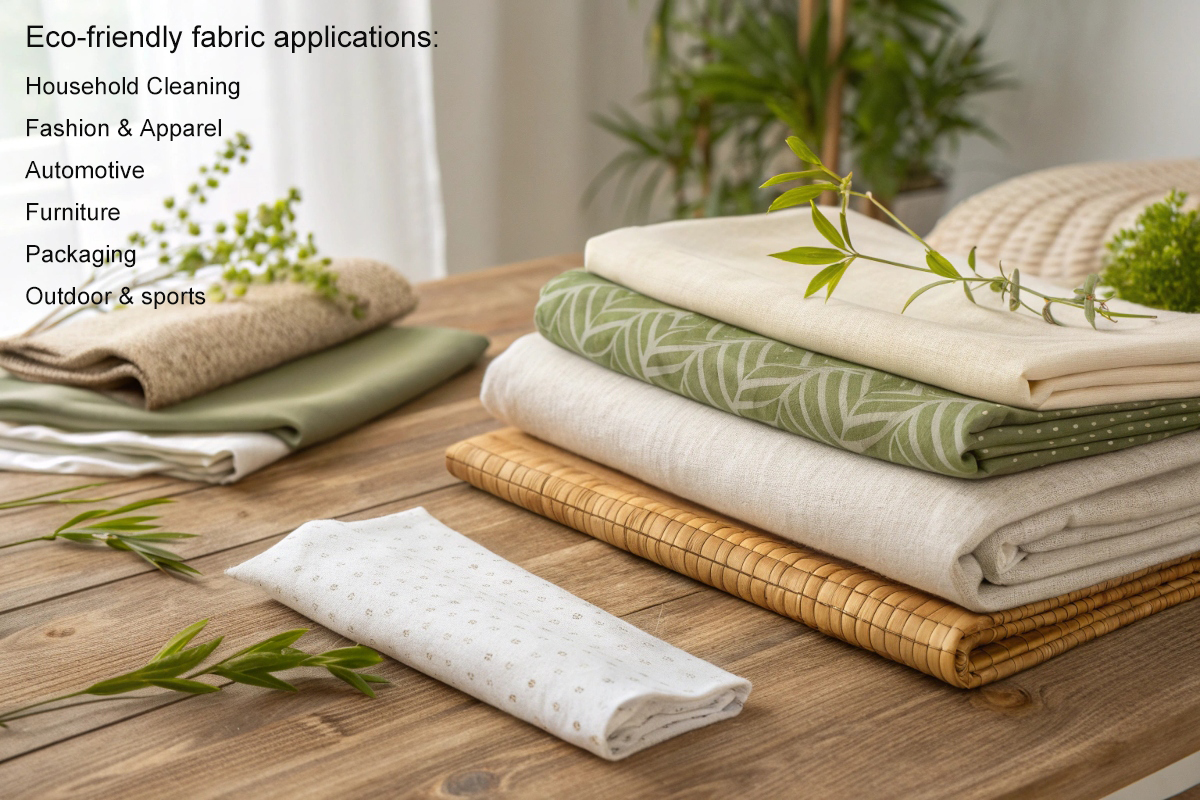
Cross-Industry Applications
| Industry | Application Example |
|---|---|
| Fashion & Apparel | T-shirts, denim, outerwear |
| Automotive | Seat covers, interior linings |
| Furniture | Upholstery, curtains, cushions |
| Packaging | Reusable bags, fabric wraps |
| Outdoor & Sports | Technical gear, eco-towels, backpacks |
My own customers source recycled microfiber for fitness products, while others buy bamboo-based cloths for sustainable packaging inserts.
Is the Investment Worth It?
Many buyers still ask: will I get ROI? The short answer is yes.
While upfront prices may be higher, sustainable fabrics often lower long-term costs by reducing waste, returns, and regulatory risks.
Let’s Look at the Numbers
| Cost Factor | Traditional Fabrics | Eco-Friendly Fabrics |
|---|---|---|
| Unit Price | Lower upfront | Higher upfront |
| Compliance Fines Risk | High | Low |
| Customer Return Rates | Higher | Lower (due to durability claims) |
| Long-Term Cost | Escalates with waste | Lowered with efficient use |
I always advise clients to evaluate total cost of ownership12—not just the quote price.
What’s Next in Sustainable Textiles?
Innovation is happening fast—faster than most buyers realize.
Next-gen sustainable textiles include algae-based threads13, lab-grown silk14, and biodegradable smart fibers15 with built-in sensing.
Future Materials to Watch
| Innovation Type | Description | Status |
|---|---|---|
| Algae Fibers | Grown from microalgae, naturally compostable | Pilot stage |
| Lab-Grown Fabrics | Engineered from yeast or microbes | Small-batch |
| Smart Biodegradable | Temporary-use items that biodegrade post-use | Emerging |
These are not sci-fi. I’ve seen samples at trade shows and spoken to early adopters already sourcing test runs.
Conclusion
Sustainable fabrics are reshaping B2B supply chains in 2025—choose smart, certify well, and start sourcing circular.
Elbert Zhao
Founder, Elbert Wipes Solutions
📧[email protected] | 🌐 www.elbertwipes.com
8 production lines | 22 processing lines | OEKO-TEX certified | Walmart-approved supplier
-
Discover how eco-friendly fabrics can enhance your brand’s sustainability and cost-effectiveness in sourcing. ↩
-
Learn about the financial advantages of using eco-friendly fabrics in your business operations. ↩
-
Explore the regulatory benefits of adopting eco-friendly fabrics in your supply chain. ↩
-
Learn effective strategies for sourcing sustainable materials to meet customer demands and regulatory expectations, ensuring your business stays competitive. ↩
-
Discover why prioritizing sustainability is crucial for business success and how it can lead to long-term benefits and customer loyalty. ↩
-
Explore the advantages of eco-friendly fabrics to understand how they can enhance your brand’s sustainability efforts and appeal to conscious consumers. ↩
-
Learn about the advantages of sourcing smart, including long-term benefits and improved supply chain resilience. ↩
-
Understanding the impact of eco-labels can help you build a loyal customer base that values sustainability. ↩
-
Discover how sustainable sourcing can strengthen your supply chain and reduce risks in your business operations. ↩
-
Explore the pros and cons of Organic Cotton to understand its environmental impact and suitability for your needs. ↩
-
Learn about GOTS certification to ensure the fabrics you choose meet high organic and social responsibility standards. ↩
-
Understanding total cost of ownership is crucial for making informed investment decisions; this link will guide you through the calculation process. ↩
-
Explore the innovative world of algae-based threads, a key player in sustainable textiles that are eco-friendly and compostable. ↩
-
Discover the fascinating process of lab-grown silk, a sustainable alternative that reduces environmental impact in the fashion industry. ↩
-
Learn about biodegradable smart fibers, which combine technology and sustainability for a greener future in textiles. ↩

